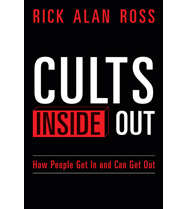What Is Coercive Control? The Hidden Abuse That Steals Your Freedom
Published By admin
You don’t wake up one day and realise you’re being controlled. It happens slowly and subtly, one rule at a time, one “concerned” question after another, and one apology that sounds just convincing enough to make you stay.
That’s the reality for so many women living under coercive control, a form of domestic and emotional abuse that doesn’t always come with scars, but cuts deep all the same.
We talk a lot about physical violence. But what happens when abuse doesn’t look like punches or bruises? What happens when the harm is invisible, but devastating?
That’s what this article is here to unpack.
What Is Coercive Control?
Coercive control is a pattern of behaviour used to dominate another person, usually a partner, through threats, intimidation, humiliation, and restriction of freedom. It’s emotional abuse at its most manipulative and calculated.
It doesn’t happen overnight. It creeps in under the radar, disguised as love, concern, or protection.
Coercive control isn’t about anger; it’s about power. It’s about shrinking someone’s world so much that they forget they ever had choices, and it’s happening far more often than we realise.
The term “coercive control” was first introduced by Dr. Evan Stark, a forensic social worker, in his 2007 book Coercive Control: How Men Entrap Women in Personal Life. His research reshaped how we think about domestic abuse, not just as physical violence, but as a pattern of psychological domination.
In 2015, the UK made coercive control a criminal offence. Australia and several U.S. states have followed suit. Scotland, Ireland, New South Wales, and California have introduced their own versions of the law. And in 2025, Queensland’s “Hannah’s Law” came into force, allowing for up to 14 years in prison for coercive control.
But in far too many countries, including Canada, there’s still no legal protection. Survivors are left without the language or the law to name what’s happening to them, and that silence is dangerous.
Why It’s So Hard to Spot
Most survivors don’t realise what’s happening, until it’s already taken hold.
Emma, now an empowerment coach, described it best:
“The insults came gradually. The rules felt like love at first. I started second-guessing everything. Eventually, I didn’t trust myself anymore. That’s the scariest part,you stop knowing what’s real.”
This is why coercive control works so effectively. It doesn’t just restrict your movements. It rewrites your reality.
Survivors often describe feeling like they’ve become a shadow of themselves. Their confidence evaporates. Their ability to leave is often gone long before they realise they need to. And if they do try to leave, the danger often escalates.
Content retrieved from: https://vocal.media/criminal/what-is-coercive-control-the-hidden-abuse-that-steals-your-freedom.






